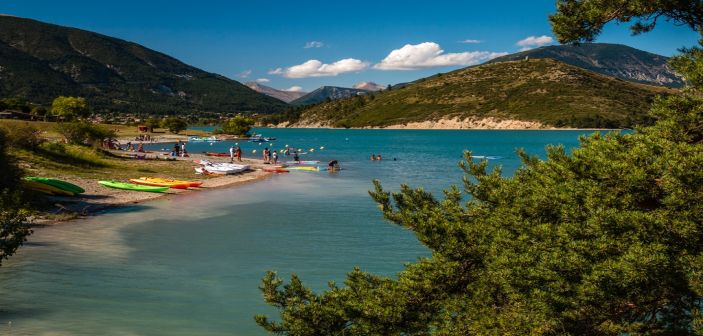Today’s visitor will sum up this village on the banks of the Verdon with the artificial beaches of Lake Castillon, and if by chance they are sporty, with the slopes of Chalvet and free flight.
Very few will delve into the history of Saint André les Alpes and its industrial past, into this forgotten and abandoned activity, which nonetheless… But let us open the history book here. As early as the 11th century, the village of Saint André was at Mont Chalvet, then essentially a pastureland, a grazing land for sheep herds. Wool, milk, and manure were the village’s economic resources. The shearing, washing, and carding of wool occupied the families’ activities.
During the winter season, we are at 900 meters altitude on a vast plateau, harsh, snowy, and inhospitable, the residents remained sheltered at home from the cold, spinning and weaving wool for their own consumption.
Two centuries later, the beginnings of a craft appear with a weaver setting up in Saint André. People brought him wool, each with their bundle. Saint André had its specialty with half-wool fabrics (wool mixed with hemp to make the fabric more durable). With the onset of the 19th century, mechanization led to industrial production. In 1818, André Honorat created his factory.
There would be several, Saint André became renowned for its production and its draperies. The Honorat family dominated this activity, becoming the sole owner of the Pra Barin district. This latter is located at the exit of the village on the road to Lambruisse at the confluence of the Issole and the Verdon.
Saint André fell victim to its isolation; in 1886 the drapery activity declined. There were no access routes, except mule trails. Other reasons included the emergence of more elegant English fabrics, the beginning of rural exodus with the lure, a mere mirage, of cities for peasants seeking (like today’s migrants) better working conditions, and especially the first synthetic fabrics. The reforestation of Chalvet reduced the pastures and thus the herds.
The Issole brought wealth to this village, an aqueduct brought water from this Verdon tributary to the mills. It is now in a poor state, and projects are being studied to preserve its ultimate remains, these witnesses to a past where Saint André was a center of the drapery industry.
The attentive visitor can, thanks to nine informative panels, discover in greater depth the drapery activity and at the same time appreciate this village bordered by the Verdon and surrounded by mountains.
Thierry Jan


